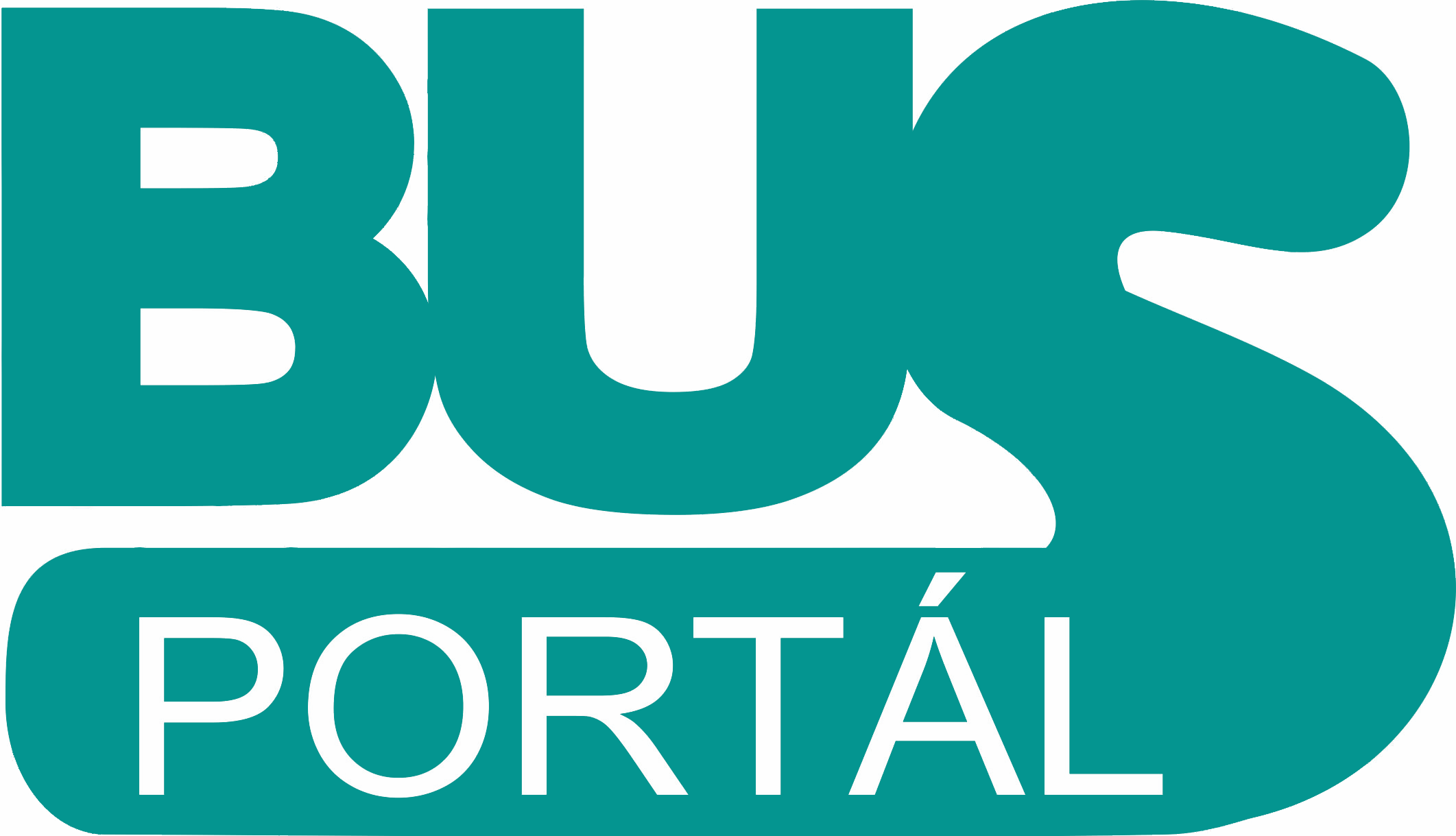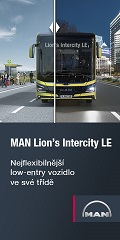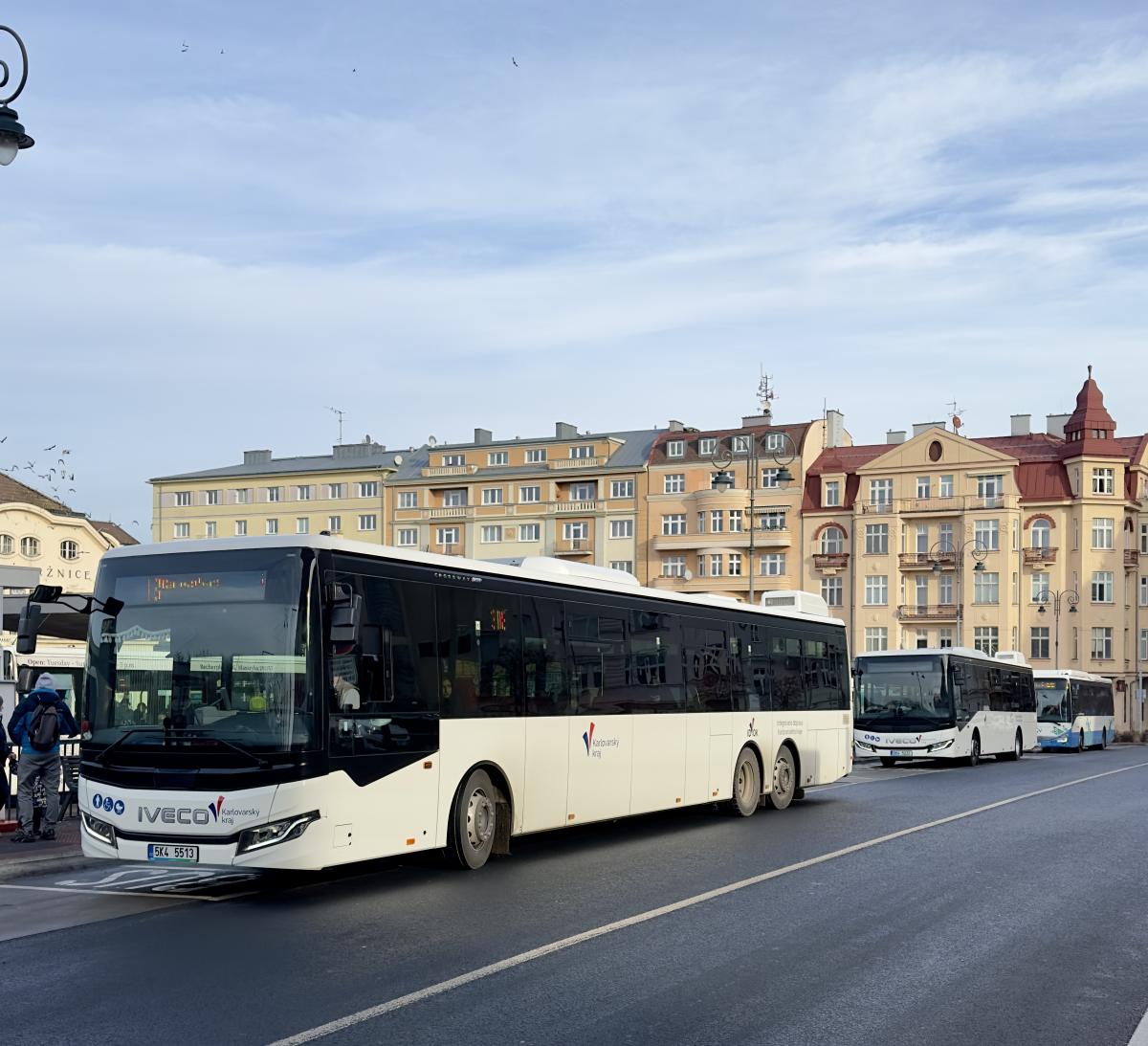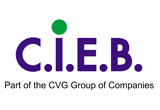
Expozice Van Hool BUSWORLD Kortrijk 2005. Foto BUSportál.
Hybridně elektrická technologie palivových článků pro USA.
BUSportál představuje velkého evropského autobusového výrobce, s jehož vozidly se na našich silnicích nesetkáváme často. (News from BUSWORLD 2005, XXL and other buses for Germany, Hybrid-electric fuel-cell bus)
Hybridně elektrická technologie palivových článků pro USA.
BUSportál představuje velkého evropského autobusového výrobce, s jehož vozidly se na našich silnicích nesetkáváme často. (News from BUSWORLD 2005, XXL and other buses for Germany, Hybrid-electric fuel-cell bus)
Tímto poměrně rozsáhlým materiálem zahajuje BUSportál pravidelnou spolupráci s belgickým výrobcem autobusů Van Hool. Pokusili jsme přinést kromě základních informací i ty nejzajímavější novinky uplynulého roku.Belgie je nejen pořadatelem prestižní výstavy BUSworld v Kortrijku (viz na Busportále BUSWOLRD 2005 Kortrijk.), ale i zemí velkého autobusového výrobce. Belgická společnost Van Hool je významným evropským výrobcem autobusů, autokarů a užitkových vozidel. Roční produkce sestává z asi 1600 autobusů a 5000 návěsů, cisteren a rámů. 80% produkce jde na export. Společnost Van Hool působí v belgickém městě Lier-Koningshooikt asi 30 kilometrů severovýchodně od Bruselu a zaměstnává 4 300 zaměstnanců. Nastavení produkce společnosti je vysoce flexibilní. Umožňuje konkurenceschopnou výrobu podle specifikací zákazníka jak ve velkých, tak v malých sériích. Autobusy jsou vybaveny převážně motory DAFa MAN.
Společnost průběžně monitoruje přání zákazníků a vývoj v oboru, ale není přítelem drastických změn v konstrukci vozidel a designu jen pro změny samotné, jejichž jediným výsledkem je devalvace stávajícího vozového parku dopravce.
Design turistických autokarů Van Hool zůstává v původní koncepci. Původní styl se postupně vyvíjí do "New Look" při zdůraznění současných detailů T9 jako je postranní linie oken a zadní stylizovaný panel, zrcátka, držadla ap. Vnitřní prostor autokaru získal větší vzdušnost a zkvalitněn LCD monitory na stropě. Nové prostorové řešení přináší větší prostor na nohy i bezpečnost.
Nové technologie jsou vyvíjeny s prioritou sériových aplikací. Nové systémy jsou začleňovány do autokarů po rozsáhlých testech. Přínos inovací je plně prověřen před předáním do běžného provozu. K novým elektronickým vymoženostem se přistupuje stejným způsobem.
Současná nabídka autobusů pro veřejný sektor byla představena v roce 2001. Nový design a technologie byly v Evropě velmi dobře přijaty. Zakázky z Německa zahrnují města jako Hamburg, Göttingen, Aachen a série vícečlánkových nízkopodlažních autobusů AGG300, trolejbusy pro Itálii: tucet třídvéřových A330T pro Lecce a 17 vícečlánkových AG300T pro Genuu. (Konec roku 2005)
Optimální obchodní rychlost je typická pro segment městských a meziměstských dopravních služeb pro cestující. Tato charakteristika dělá segment jedinečným stejně jako vysoký komfort pro cestující, vynikající řiditelnost a jednoduchý přístup k provozním komponentám vozidel. V roce 2005 byly konstrukční koncepce Van Hool pochváleny při představení hybridní verze autobusu v USA.
Zakázky (nejen) z Německa
Van Hool jako belgický výrobce loni dostal zakázku na 115 městských autobusů pro Brusel současně se zakázkou na "Hamburger Hochbahn" - 10 AGG vícečlánkových nízkopodlažních autobusů a tucet nízkopodlažních městských autobusů A330 s opcí na 13 dalších vícečlánkových. Zakázka autobusů "XXL" se kryje se světovým šampionátem ve fotbale. Budou nasazeny na MetroBus lince 5 a také na lince pro zaměstnance "Airbuswerk", kde se staví Airbus A380. Autobusy pojmou 60 sedících a 120 stojících cestujících, jsou vybaveny klimatizací. Dva vchody mají rampu pro vozíčkáře.Van Hool - hybridně elektrická technologie palivových článků v Severní Americe
Zhruba před dvěma lety vyvinula společnost autobus na vodíkový pohon pro severoamerický trh na zakázku kalifornských dopravních společností. Stát Kalifornie plánuje zavést nejpřísnější emisní pravidla pro městské autobusy na světě - to dává perspektivu dieselovým motorům k registraci pouze do roku 2007.120 kW palivový článek je elektromechanické zařízení kombinující vodíkové palivo a kyslík ze vzduchu a produkuje elektřinu k pohonu vozidla dvěma 85 kW elektromotory. Článek dodává United Technology Corp, dodavatel "NASA Space Shuttle Orbiter" a největší výrobce palivových článků na světě.
Palubní baterie shromažďují nadbytečnou energii a zachycenou regenerativní brzdnou energii. Mohou dodat 100 kW k 120kW z článku v momentě stoupání autobusu nebo akcelerace. Systém zvyšuje účinnost a spolehlivost. Jedinou "emisí" je vodní pára z výfuku.
Autobus je neobyčejně klidný, protože palivový článek neobsahuje pohyblivé části. Jízdní vlastnosti jsou obdobné jako u běžného autobusu. Životnost vozidla je vysoká, protože palivový článek kombinuje vodík a kyslík na nízkotlakém principu a nevyžaduje kompresory.
Hybridní systém je integrován ve vozidle bez vlivu na pohodlí srovnatelné s moderním dieselovým autobusem - nízkopodlažní vstupy, troje široké dveře, přístupnost pro pasažéry s omezenou pohyblovostí, kapacita sedadel, klimatizace ap.
Vlámskou továrnu Van Hool v belgickém Lieru nový produkt těší a vidí jeho budoucnost i na belgickém a evropském trhu.
Zdroj: Tiskové zprávy Van Hool, překlad a úprava BUSportál.
Reliability-driven evolvements.
Van Hool is located in Lier-Koningshooikt, Belgium (approx. 20 miles northwest of Brussels), and has a work force of 4,300 employees. Van Hool manufactures buses, coaches and heavy-duty truck trailers (semi-trailers, tankers, tank containers). This family owned business manufactures some 1,600 buses & coaches and 4,000 trailers annually, of which 80 % are exported worldwide.VAN HOOL continuously monitors the aspirations of its customers and the developments in the bus and coach industry, but is averse to drastic changes in vehicle construction and design just for the sake of change, that only results in a visual depreciation of the customer’s fleet. For 2006 the VAN HOOL T9 coach design remains as initially conceived. The original styling has further evolved into a ‘New Look’, by emphasising certain T9 detail characteristics such as the side window line and back styling panel, the mirrors, the grab handles, etc. The coach saloon received a more airy atmosphere and an enhanced incorporation of LCD monitors in the ceiling. New partitions offer more legroom and safety.
New technologies are evaluated carefully prior to serial application. They should be 100 % free of any potential mortgage on vehicle reliability. New systems are incorporated in coaches after extensive tests, rather than to apply them quickly for operator’s evaluation in daily service. The value contribution of novelties has to be fully proven before it comes to this. New electronic features are approached in the same way, i.e. to what extent is comfort or safety enhanced without detriment to maintenance and ease of vehicle use.
The current VAN HOOL bus range for public transportation was launched in May 2001. The new design and technology were well received in Europe. Orders from Germany include the cities of Hamburg, Göttingen, Aachen and a series of bi-articulated low floor AGG300 buses. Recently 2 trolleybus orders came from Italy: a dozen 3-doors rigid A330T for Lecce and 17 articulated AG300T for Genua.
An optimal commercial speed is a typical for the Van Hool bus range for urban and interurban passenger transport service. This characteristic makes the range unique as it is combined with high passenger comfort, excellent driveability and easy access to serviceable componentry. Earlier this month, Van Hool’s construction concepts were praised at the launch of a hybrid-electric fuel cell bus version in the USA.
From the Press Release Van Hool to BUSWORLD, shorted, part of other PR added.
German bus orders for VAN HOOL
Just after the recent order of 115 city buses for Brussels, VAN HOOL received an order from the ‘Hamburger Hochbahn’. It consists of 10 AGG 300 bi-articulated low floor buses and a dozen A330 low floor city buses with an option on 13 additional bi-artics.The order was awarded after an 8-month evaluation of an AGG300, carrying an appropriate XXL branding, on the Hamburger’ MetroBus line 5. Being one of the largest public transport undertakings in Germany, Hamburg has always played a pioneer role in public transport. According to an independent survey with passengers and drivers 94 % of travellers appreciated the quality of the vehicle and 85 % claimed an enhanced comfort. Despite its 25-meter length, an overwhelming majority of drivers praised the manoeuvrability of the vehicle. So the bus was accepted by Hamburger Hochbahn and they ordered 10 of these bi-articulated low floor buses with an option on 13 vehicles of this type.
Delivery of the XXLs will coincide with the world football cup. They will run on the MetroBus Line 5 as well as on a bus line bringing the workers to the “Airbuswerk” where the big Airbus A 380 is built. Two entrances of the vehicle will have an access ramp for wheelchair users or baby prams. The buses seat 60 passengers and have space for up to 120 standees. The air conditioned vehicles are powered by a DAF diesel engine with root filter.
The 12 low floor city buses are a 2-door version of the well-known A330 with vertical DAF diesel engine stacked at the left side in the rear. The air conditioned buses have an access ramp at the second door, 36 seats and standee space for up to 54.
Both Van Hool bus types comply to the specific operational requirements of the local public transport authority and are fitted with a VDV dash.
Göttingen (Germany) ordered nine A320 Van Hool buses. This A320 combines a higher seating capacity (38) to a low entry at a front and centre door. The buses will be powered by a MAN Euro 4 diesel engine, again with root filter. These vehicles are another proof that VAN HOOL is able to construct there vehicles to the specific needs of the customers.
By the end year 2005, the buses will be operating in Hamburg and Göttingen. This is a reward for Van Hool’s efforts to offer modern buses for efficient and economical public transport in German cities.
From the Press Release Van Hool.
New Van Hool fuel cell bus unveiled in North America
“This is not merely a fuel cell bus” said Rick Fernandez, General Manager of AC Transit, in his opening address. “It’s a hybrid-electric fuel cell bus”.Van Hool in partnership with its customer AC Transit of Oakland, California, and UTC Fuel Cells of Connecticut built this newest hydrogen fuel cell bus.
In two years, the team developed and built the hydrogen-powered bus for the North American market. Public transport companies in California ordered four units: three for AC Transit and one for SunLine Transit. The State of California plans to introduce the most stringent emission restrictions in the world for city buses, to such an extent that new diesel powered buses can no longer be registered from 2007 onwards. All local Authorities are increasing their efforts to experiment with hydrogen as a recurrent and zero-emission fuel in city buses in order to achieve large-scale applications in the near future.
The 120 kW fuel cell is an electromechanical device that combines hydrogen fuel and oxygen from the air to produce electricity to power the vehicle through two 85 kW electric motors. The fuel cell is provided by United Technology Corp, the supplier of fuel cell power plants for NASA’s Space Shuttle Orbiter and the largest fuel cell manufacturer in the world.
On-board batteries store surplus power and the power captured through regenerative braking energy. They can provide 100 kW of power in addition to the 120 kW available from the fuel cell whenever required on steep hills or at acceleration. This characteristic is the so-called ‘hybrid-electric fuel cell’ technology. This system enhances fuel efficiency and reliability. The only emission is water vapour from the exhaust.
The bus is extremely quiet because the fuel cell itself has no moving parts. Driving range and performances are similar to a standard bus. Vehicle life expectations are high because this fuel cell combines hydrogen and oxygen at near-ambient pressure and does not require compressors. 50 kgs of hydrogen are stored in eight 350 bar pressurized roof mounted tanks.
The hybrid system is integrated in the vehicle without affecting the comfort features of a modern diesel powered bus: flat step less floor throughout the full saloon length, 3 wide entrance/egress doors, accessibility for mobility impaired passengers, seating capacity, climatisation, etc.
Flemish bus manufacturer Van Hool from Lier, Belgium, being very pleased with the new product, sees also a future for such fuel cell buses in its own country. Using the American success as a platform for further development, a ”Flanders’ fuel cell bus project” has been submitted. This is a concrete response to the policy statements of the Flemish Community with regard to environment protection, mobility and energy saving issues. The bus would be built to European Regulations and local operational requirements. The Flemish public transport undertaking, De Lijn, and several European and Belgian cities can then enter the bus on their regular service diagrams for evaluation of the new technology.
From the Press Release Van Hool, shorted.

24,5 metrový "XXL".
Van Hool BUSWORLD Kortrijk 2005 v exteriéru. Foto BUSportál.

24,5 metrový "XXL". Van Hool BUSWORLD Kortrijk 2005 v exteriéru. Foto BUSportál.

Van Hool 916 Alizée Alicron 12.4 m.
Expozice Van Hool BUSWORLD Kortrijk 2005. Foto BUSportál.

Expozice Van Hool BUSWORLD Kortrijk 2005. Foto BUSportál.

Expozice Van Hool BUSWORLD Kortrijk 2005.
Městské autobusy.
Foto BUSportál.

Expozice Van Hool BUSWORLD Kortrijk 2005. Foto BUSportál. Článkový městský autobus.

Turistické autobusy T917 Astron 13.84 m a T916 Acron 13 m.
Expozice Van Hool BUSWORLD Kortrijk 2005. Foto BUSportál.

Doubledecker TD925 Astromega 13.5m / 4m.
Expozice Van Hool BUSWORLD Kortrijk 2005. Foto BUSportál.

Expozice Van Hool BUSWORLD Kortrijk 2005. Foto BUSportál.

V provozu v České republice BUSportál zachytil starší turistický autobus Van Hool na Florenci (SAD BBDS Banská Bystrica).




 IVECO BUS posiluje v Turecku s novými dodávkami CROSSWAY
IVECO BUS posiluje v Turecku s novými dodávkami CROSSWAY
 Na Jihlavsku budou zajišťovat obslužnost autobusy Iveco…
Na Jihlavsku budou zajišťovat obslužnost autobusy Iveco…
 V Karlovarském kraji už jezdí autobusy pro větší počet…
V Karlovarském kraji už jezdí autobusy pro větší počet…







